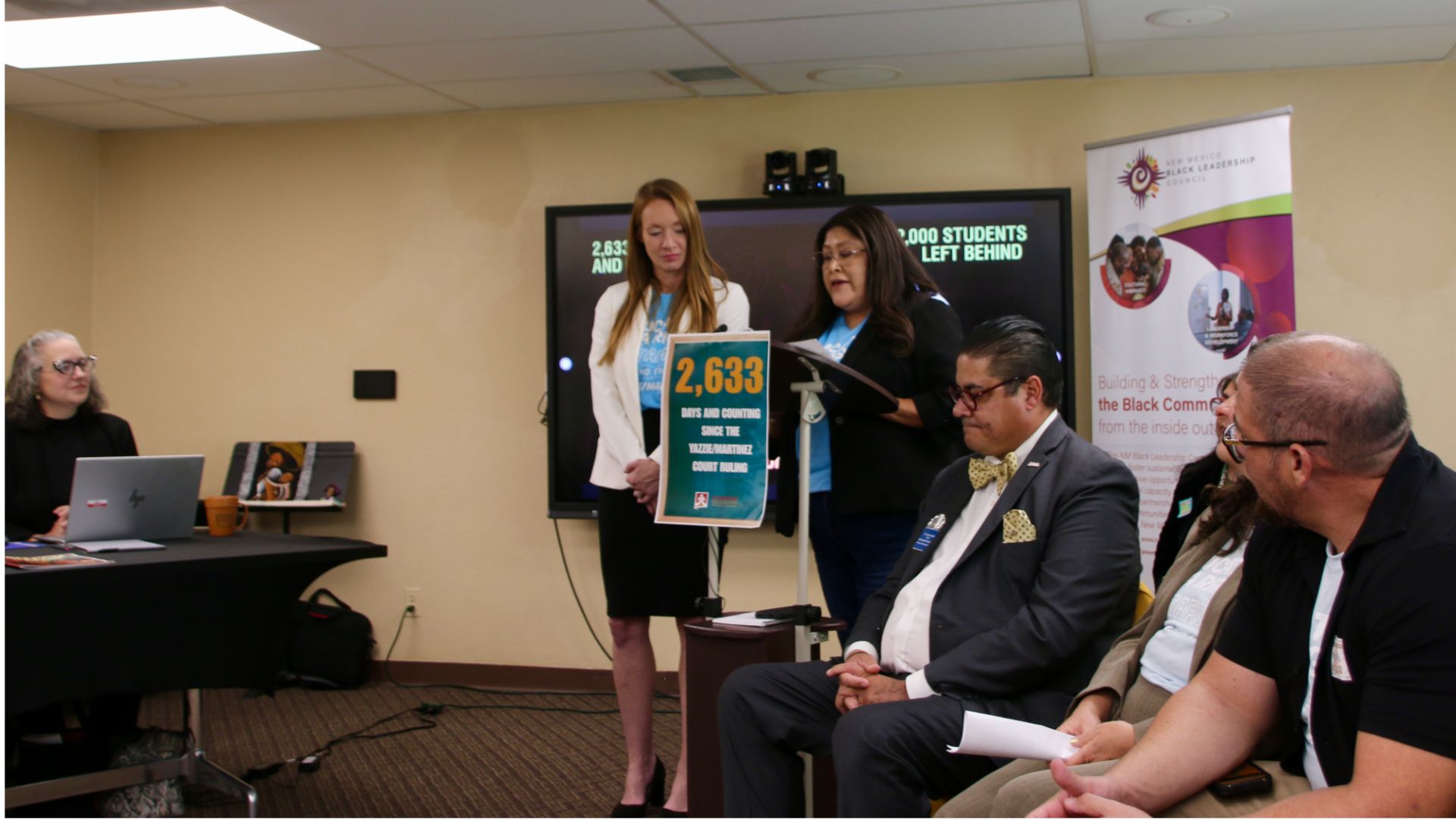Yazzie/Martinez plan still needs work, education advocates say
by Bella Davis, New Mexico In Depth
This story was originally published at New Mexico In Depth, a NMPBS partner.

The Public Education Department’s court-ordered plan to improve education for public school students across New Mexico lacks robust community oversight and targeted investments, advocates and educators say.
Those are some initial reactions shared at a press conference Wednesday in Albuquerque to the 190-page plan released this week.
In April, a state judge found New Mexico wasn’t complying with a landmark 2018 ruling, known as Yazzie/Martinez for its lead plaintiffs, that directed the state to meet its constitutional duty to sufficiently educate Native American students, English language learners, low-income students, and students with disabilities.
The education department was ordered to provide a draft plan by October.
After a series of public meetings, the department met the deadline and asked for feedback on the draft. Indigenous education experts and other advocates said it was lacking in detail, with Melissa Candelaria (San Felipe Pueblo), education director at the New Mexico Center on Law and Poverty and attorney for the Yazzie plaintiffs, calling it “dismal.”
The agency’s latest version was delivered Monday. Plaintiffs have until Dec. 1 to file objections in court.
In a Tuesday press release, Public Education Secretary Mariana Padilla wrote, “We listened to what communities told us they need, and this plan reflects those priorities. Every student deserves access to quality education that respects their culture and language.”
But while some proposals in the plan “use the language of equity,” said Loretta Trujillo, executive director of Transform Education NM, “they keep control and resources exactly where they’ve always been” instead of giving greater power to communities and tribal governments.
The plan adds more detail to a section about culturally and linguistically responsive education — teaching that integrates students’ cultures, experiences and languages — but it oversimplifies what that requires, speakers on Wednesday said.
“The final plan suggests that giving teachers high quality textbooks is the same as giving students culturally and linguistically responsive teaching … It is not the same,” said Travis McKenzie, a teacher at Polk Middle School in Albuquerque’s South Valley. “Students need teaching rooted in who they are, teaching and curriculum that honors their cultural heritage, that honors their diverse walks of life, and allows them to see themselves in the content that we teach.”
To that end, he said, one of his school’s focuses is outdoor learning.
Laurel Nesbitt, senior attorney for Disability Rights New Mexico, said one “encouraging aspect” of the plan is that it acknowledges the need for more academic and behavioral support for students with disabilities, who are disproportionately suspended and the subjects of law enforcement calls.
The plan proposes training for educators that would cut down on those practices and create safer environments for learning. But instead of simply offering training, the state should require that all educators and administrators receive it, Nesbitt said.
Speakers at Wednesday’s event, hosted at the New Mexico Black Leadership Council’s headquarters, said although Black students aren’t one of the four student groups identified in the lawsuit, the plan also needs to include them. Since the 2018 ruling, New Mexico has passed the Black Education Act, which mandates, among other things, anti-racism trainings for school staff.
“Black students experience lower expectations, harsher discipline and fewer opportunities for advanced coursework and enrichment,” said state Rep. Janelle Anyanonu, a Democrat who represents southeast Albuquerque. “Together, we must continue to forcibly advocate for these students and make sure they’re not overlooked.”
Local organizations including the New Mexico Center on Law and Poverty are hosting a public event Friday, Nov. 21 to share their full review of the plan and discuss next steps with families and educators.
This story was originally published at New Mexico In Depth, a NMPBS partner.

